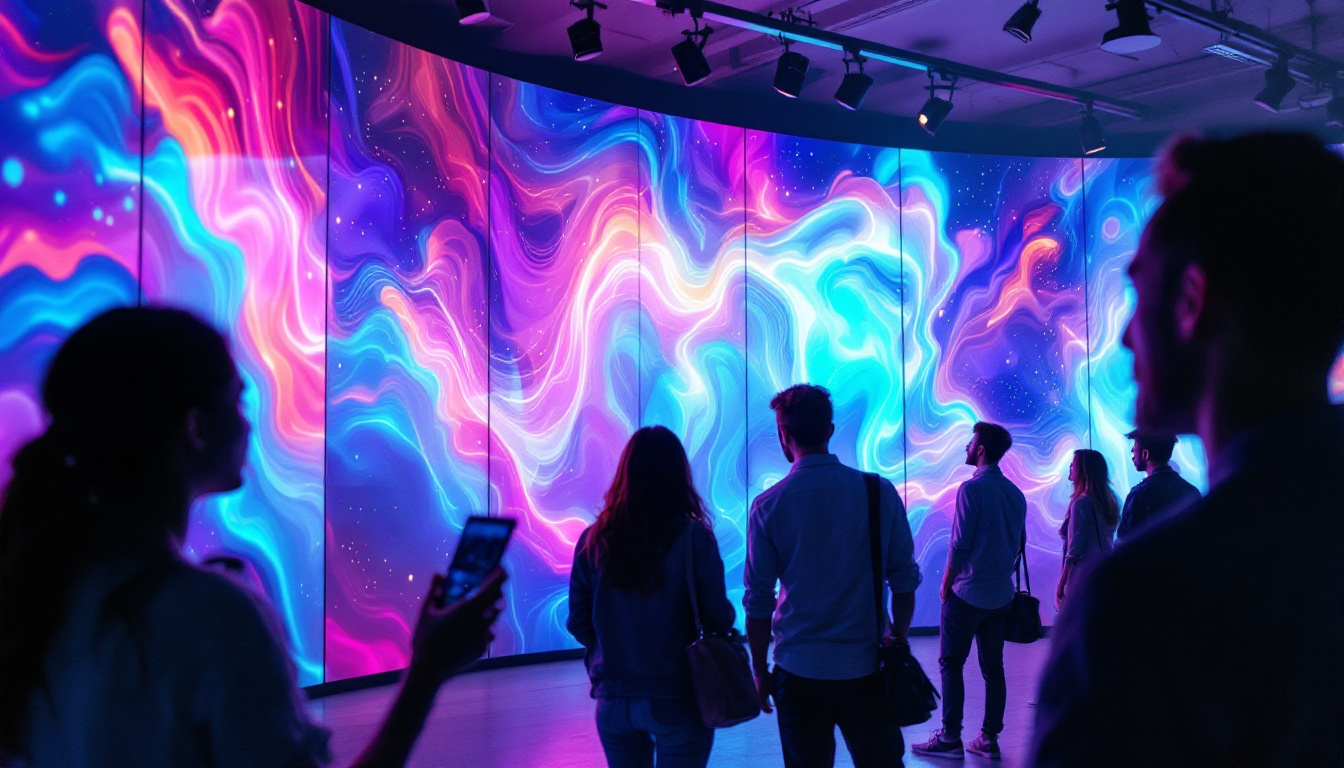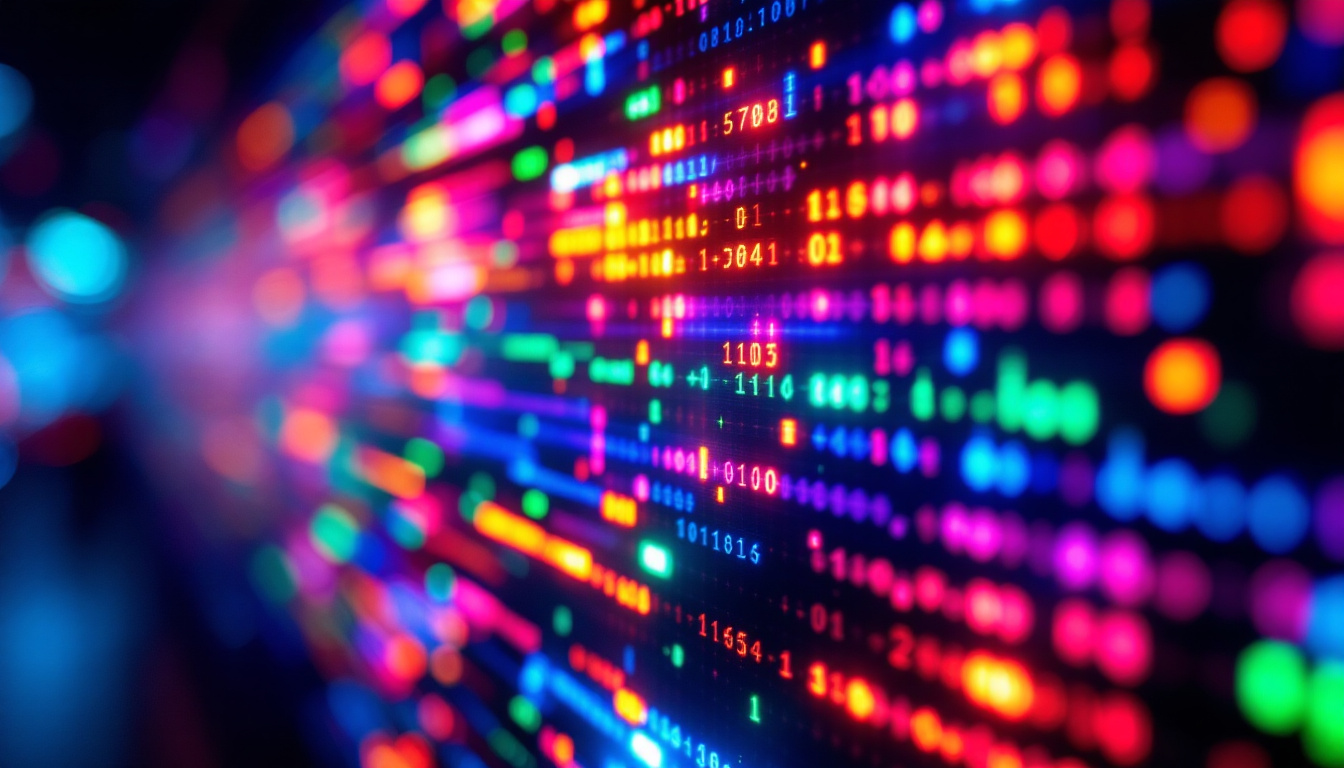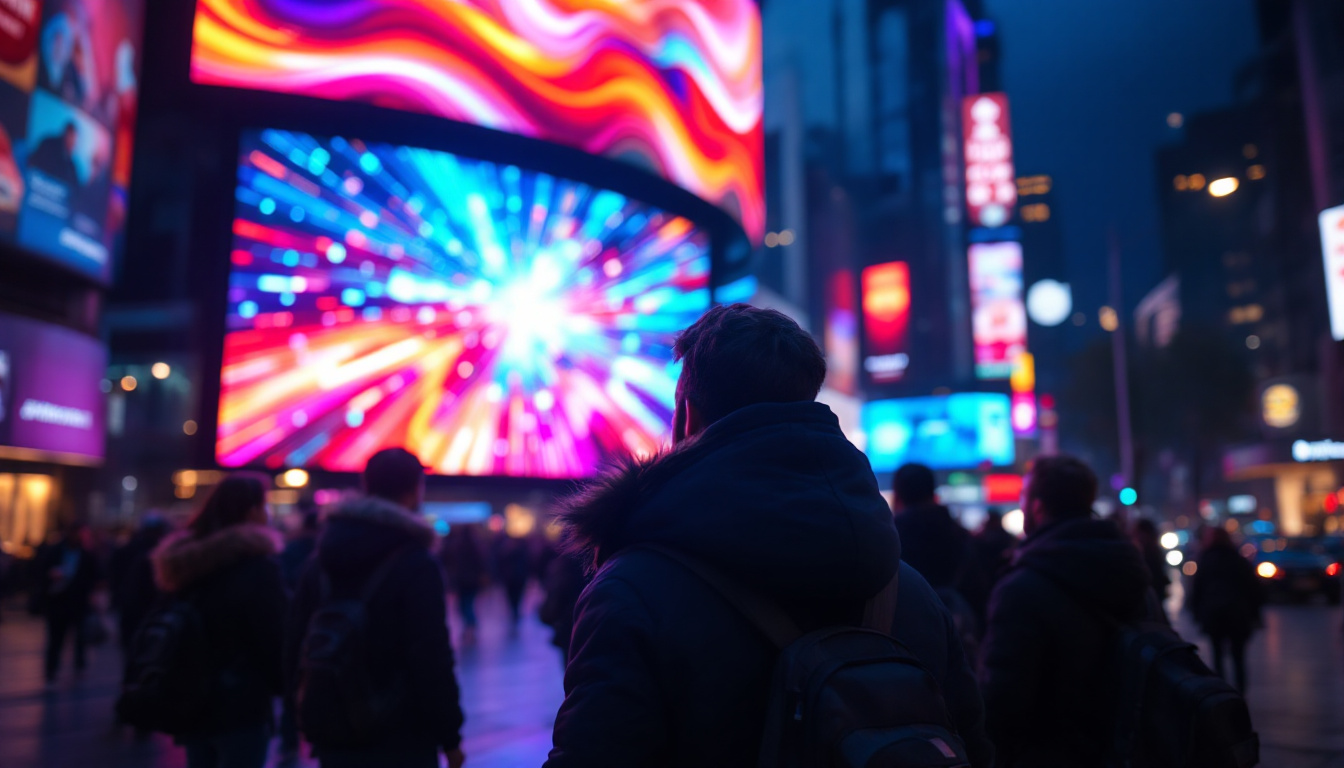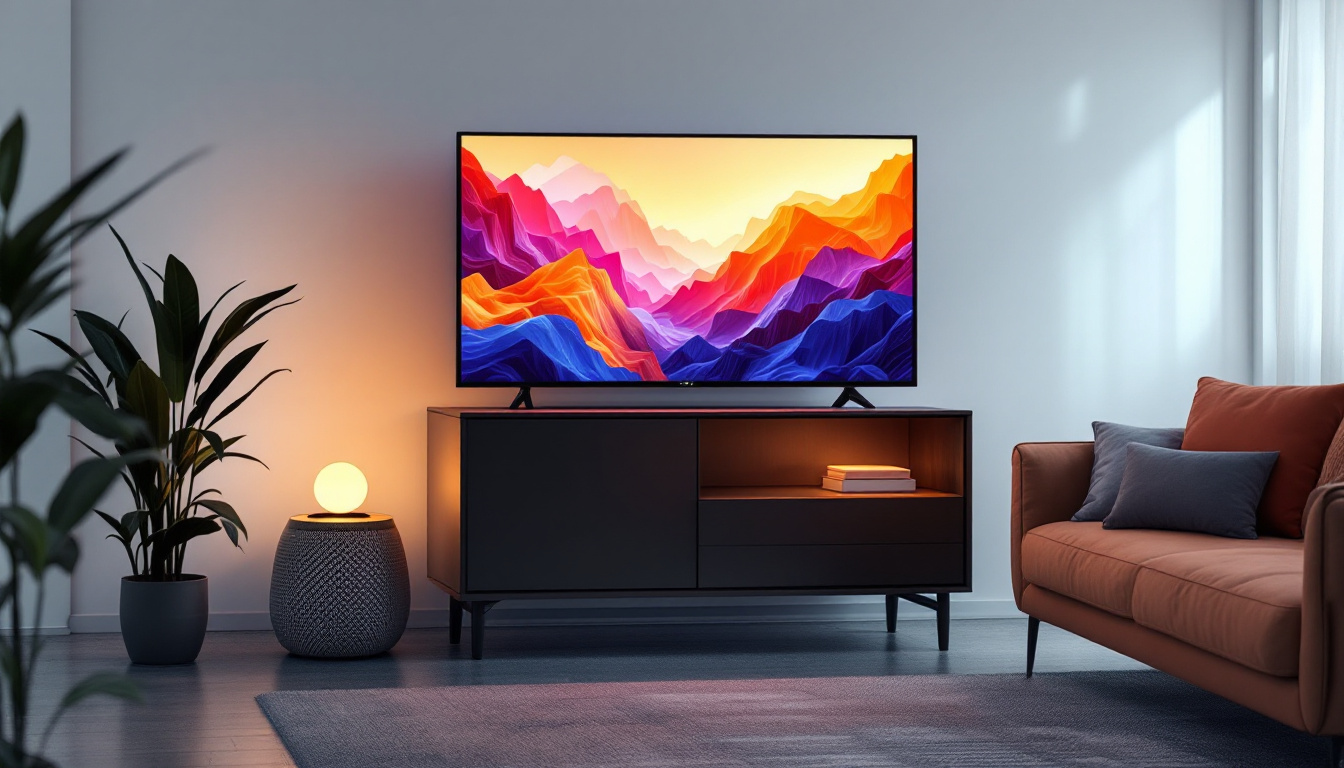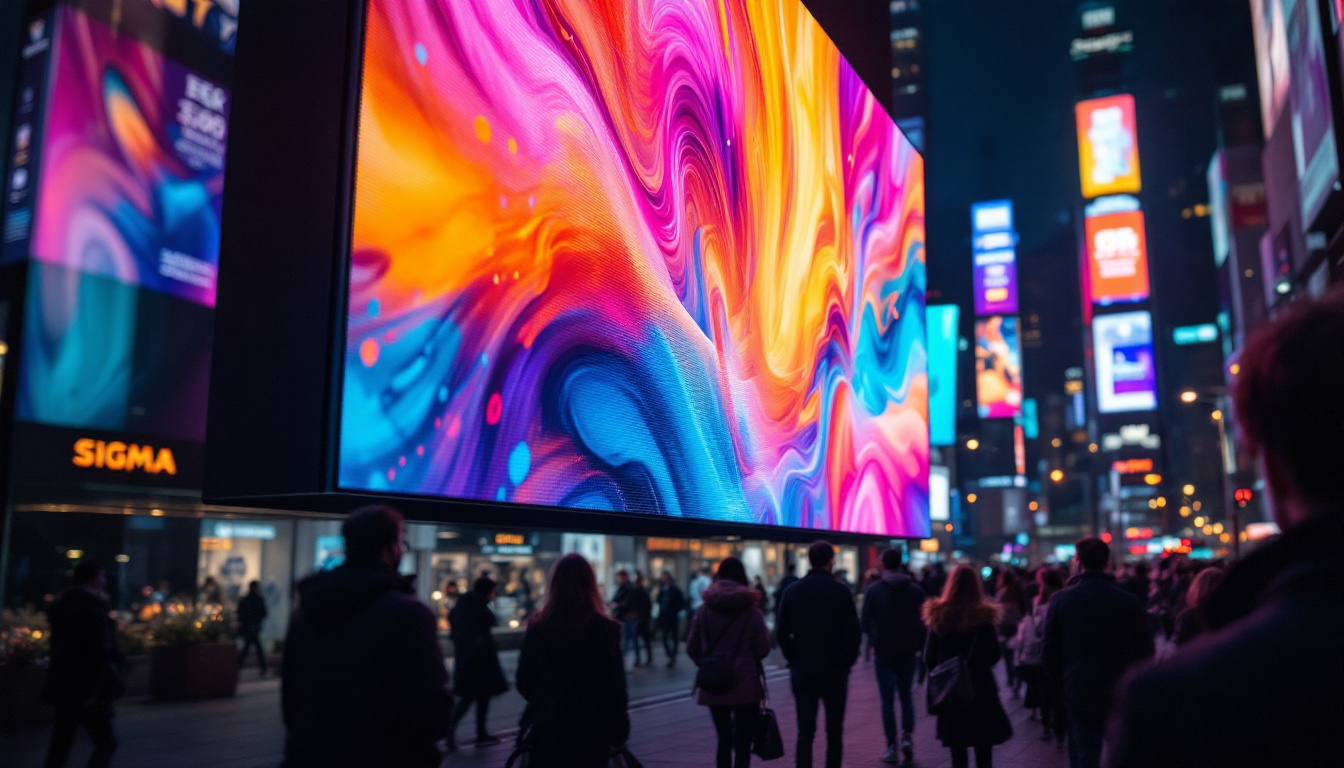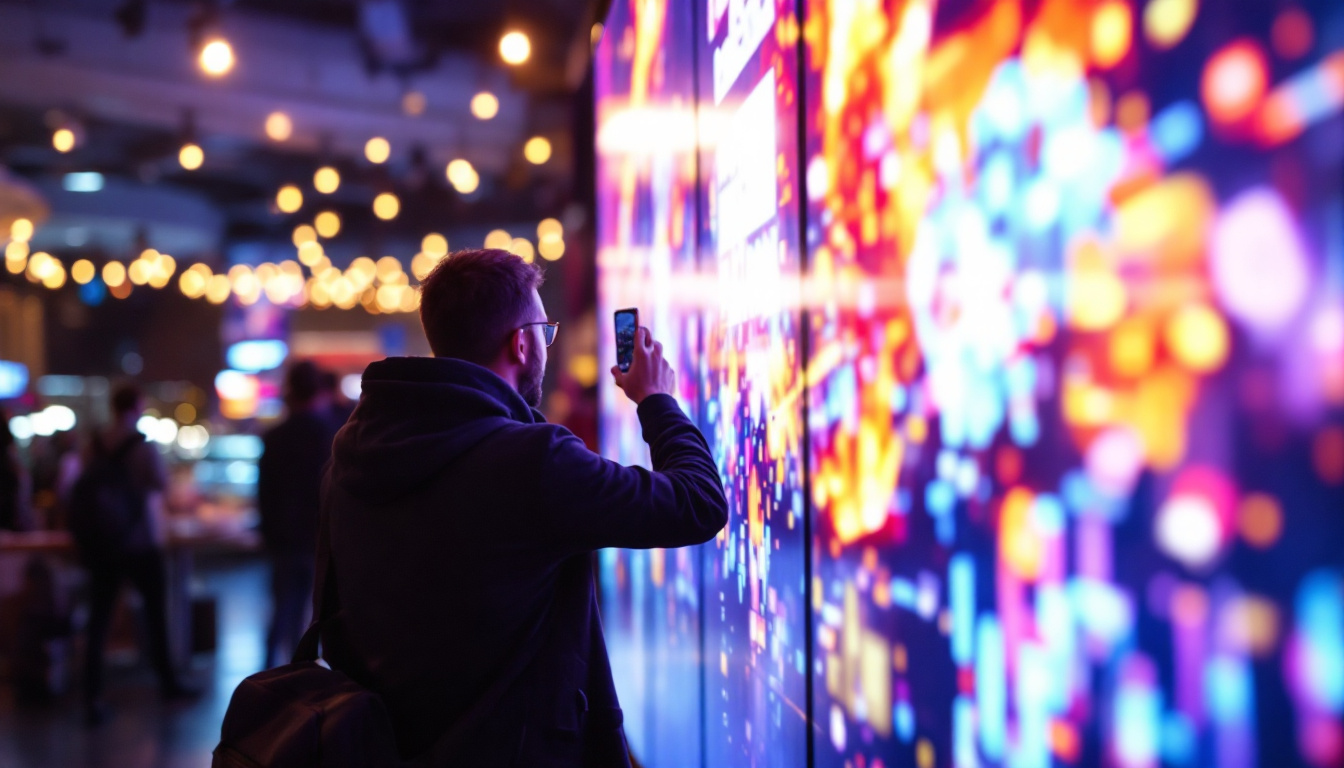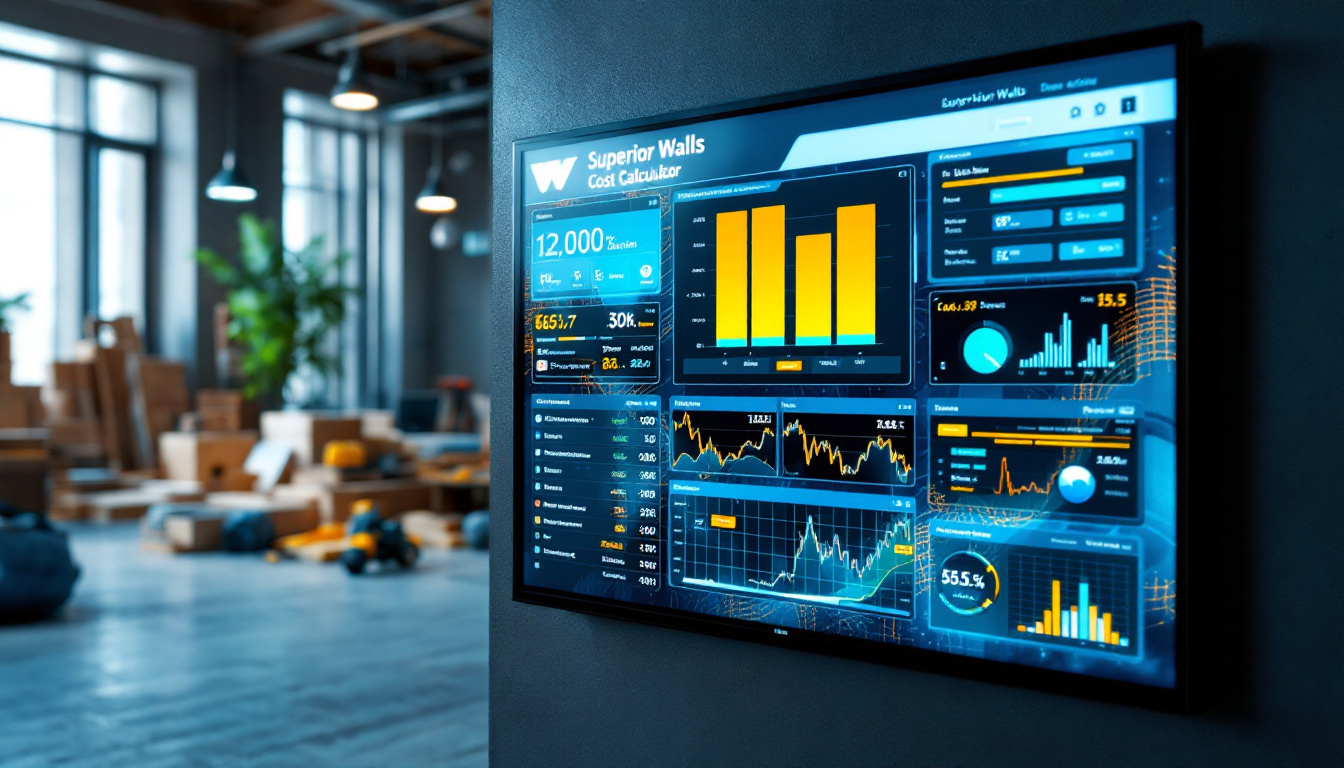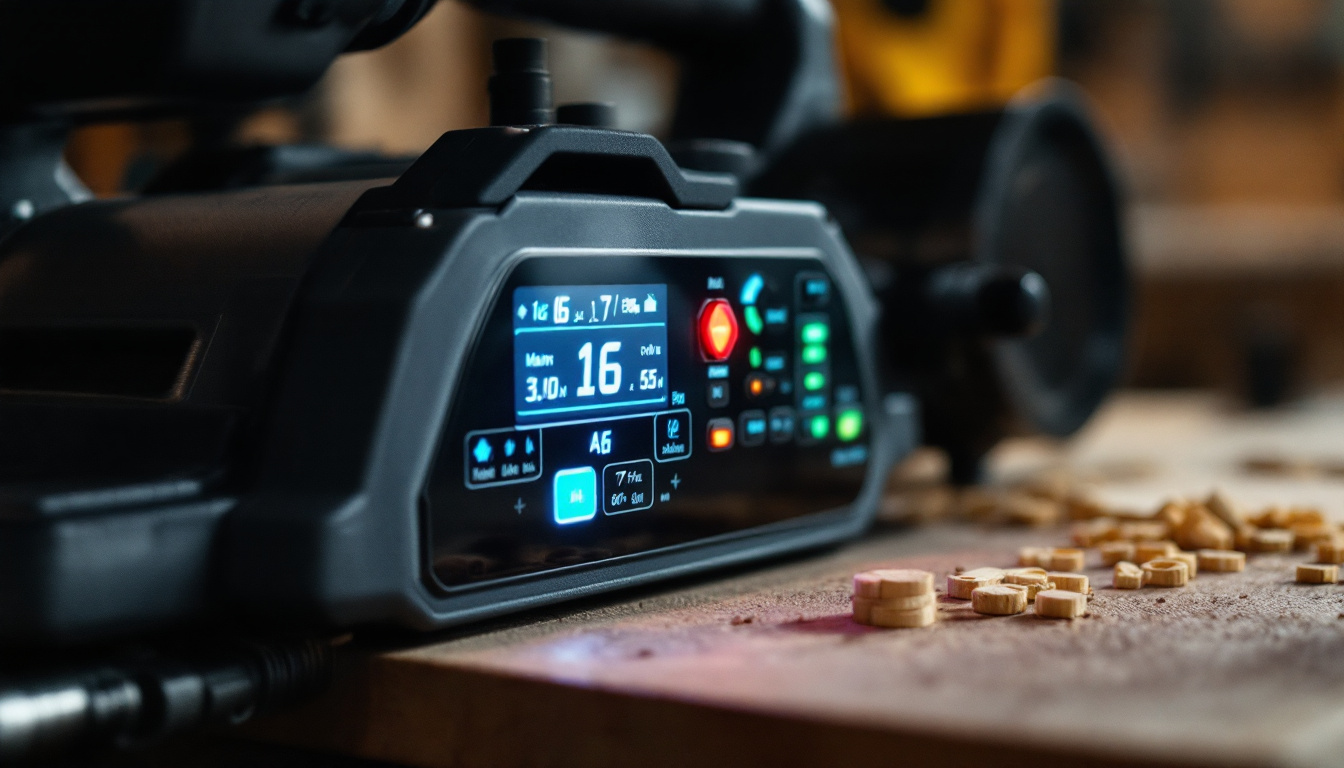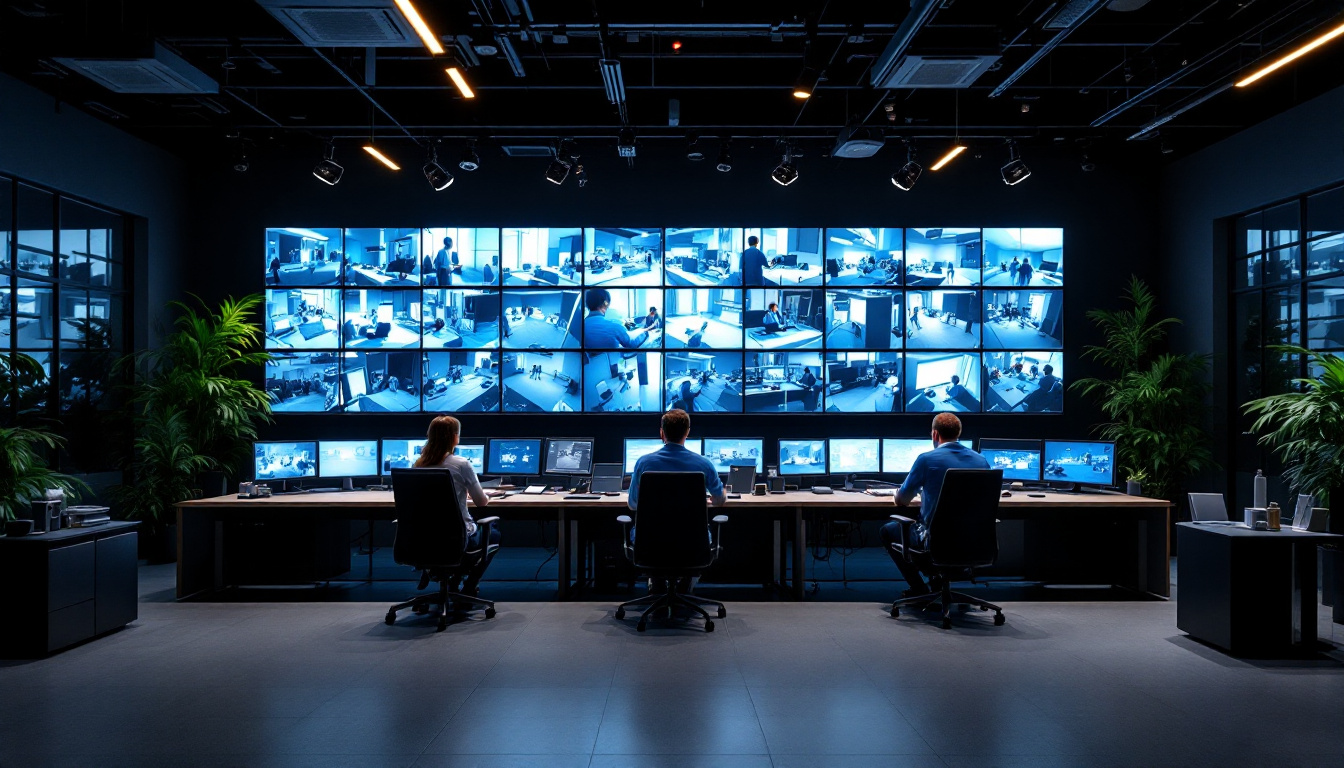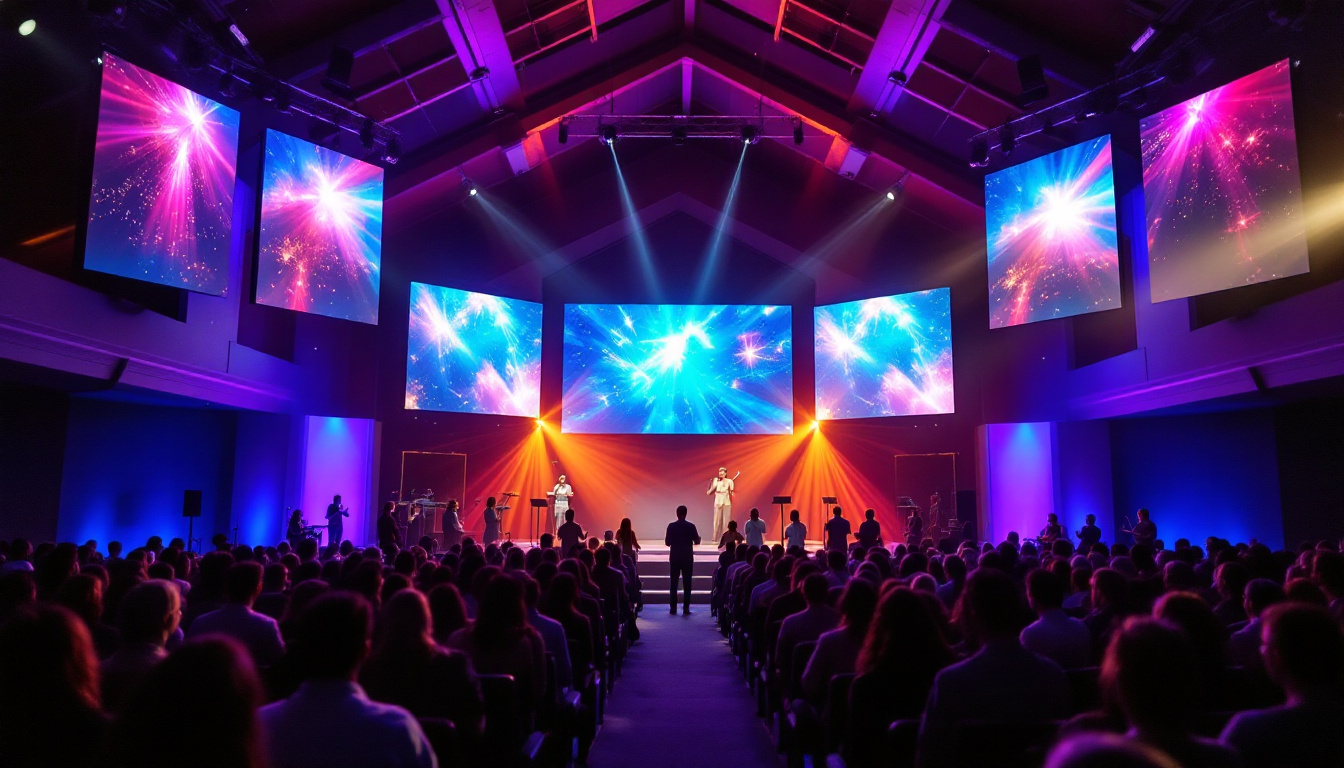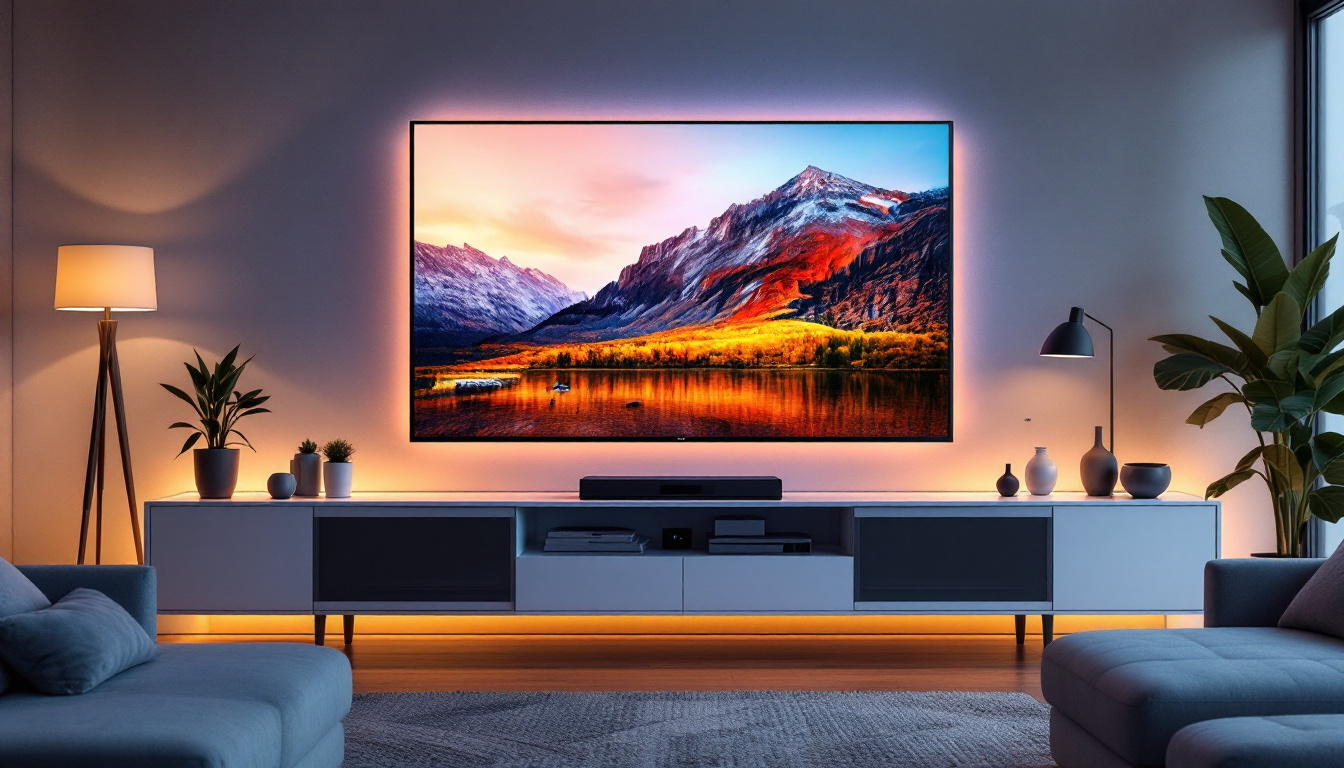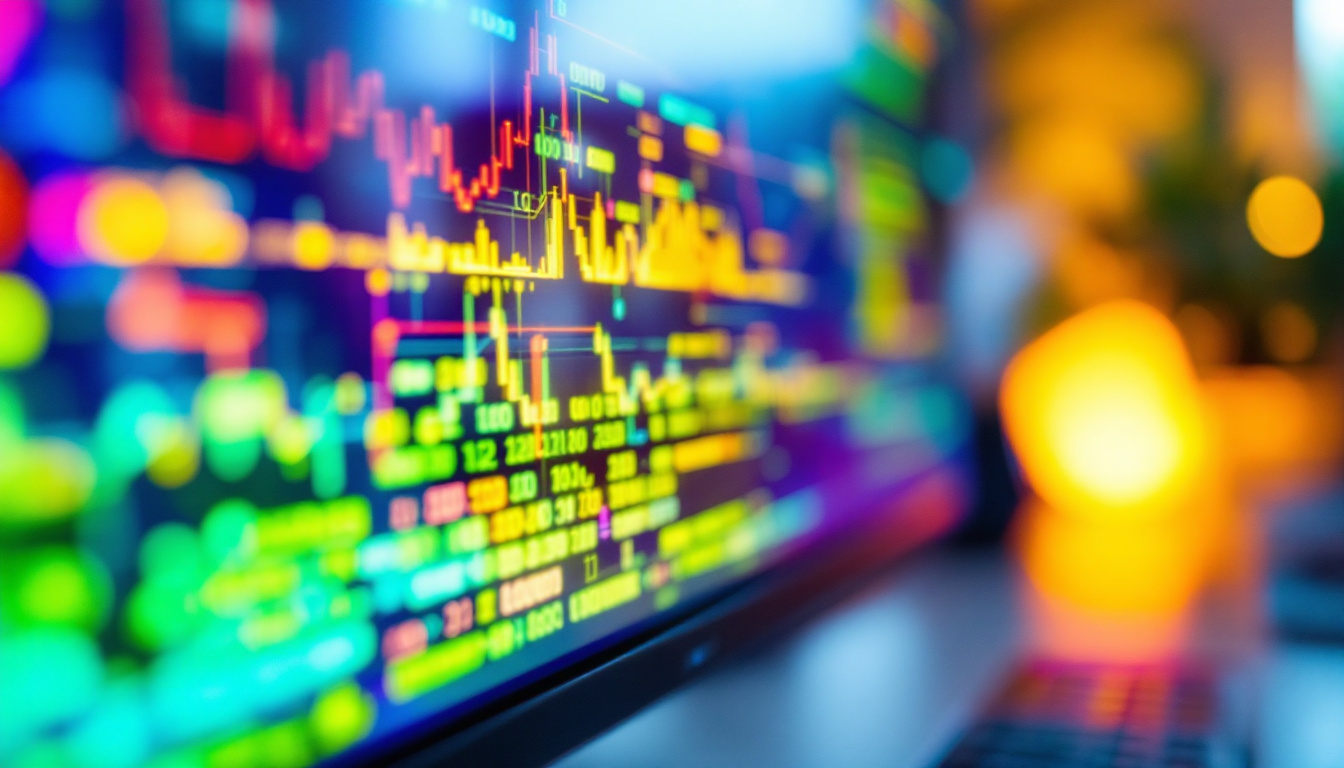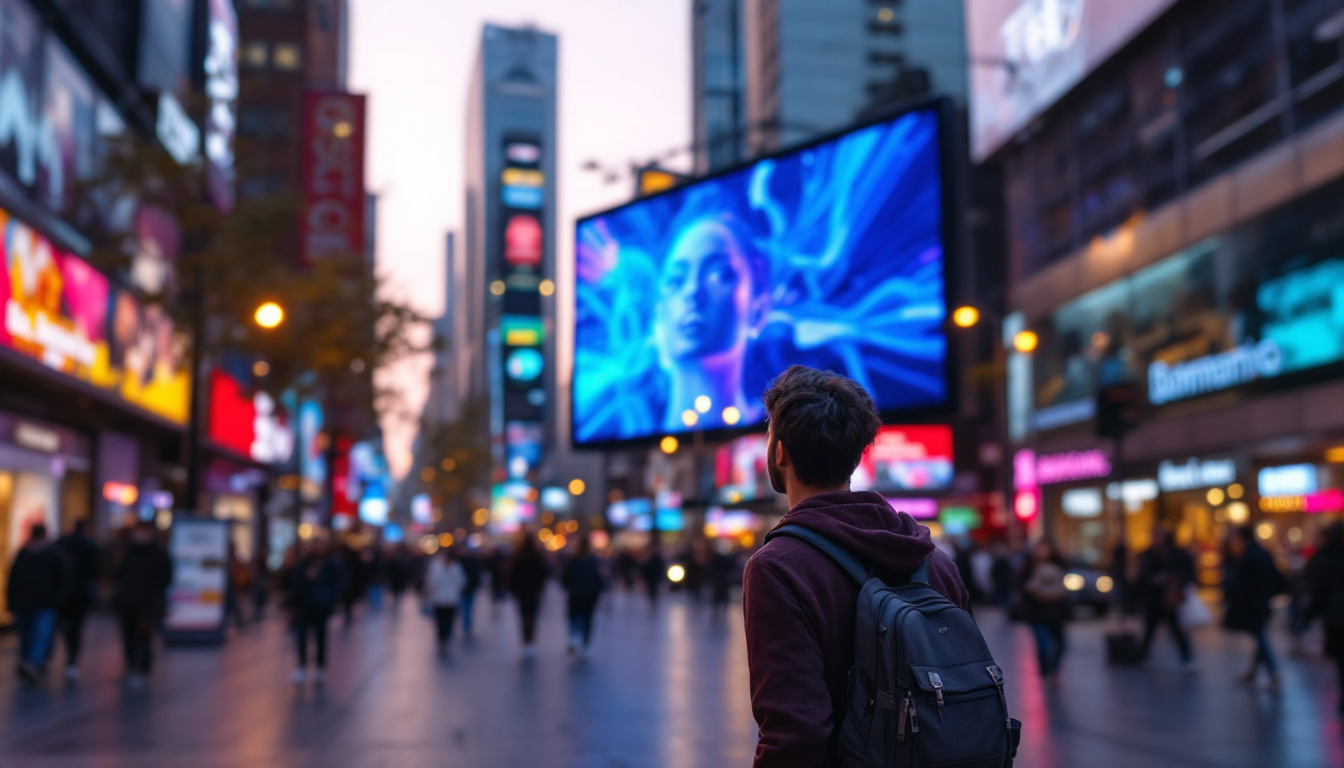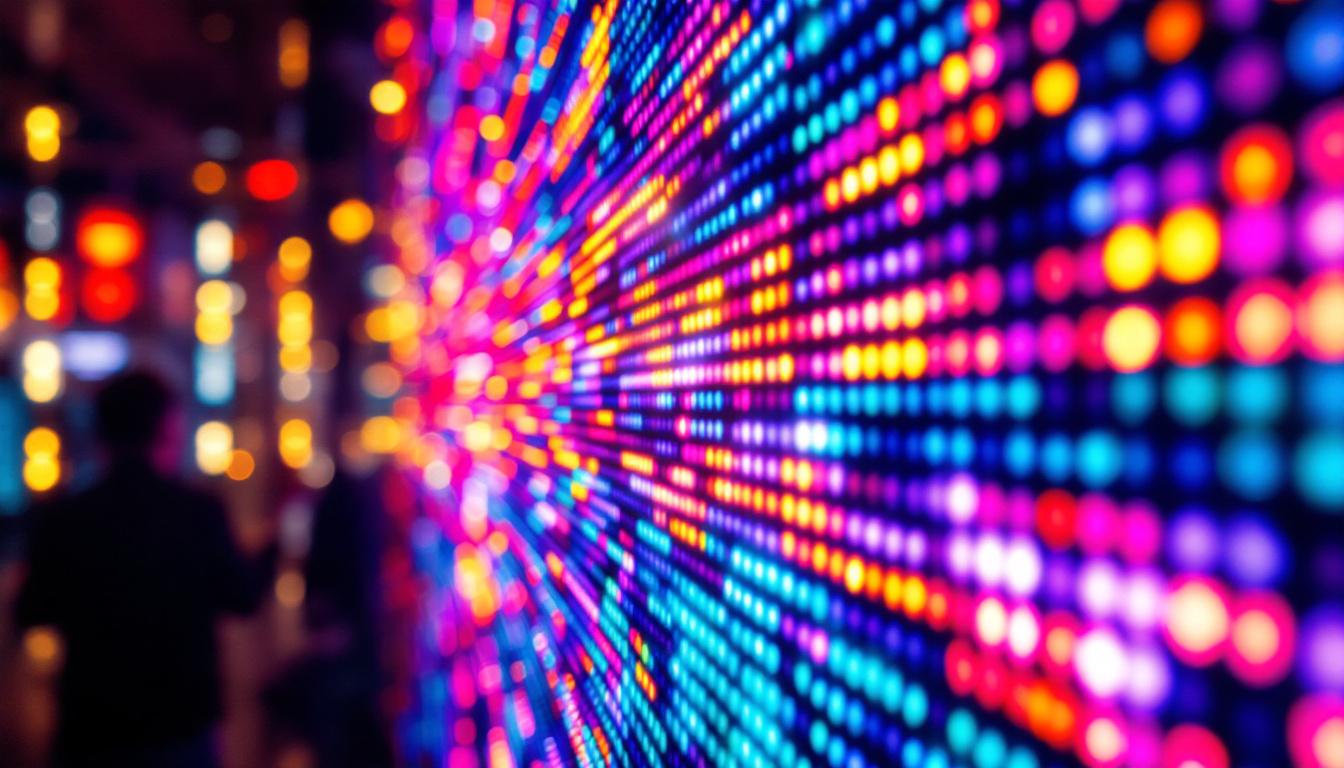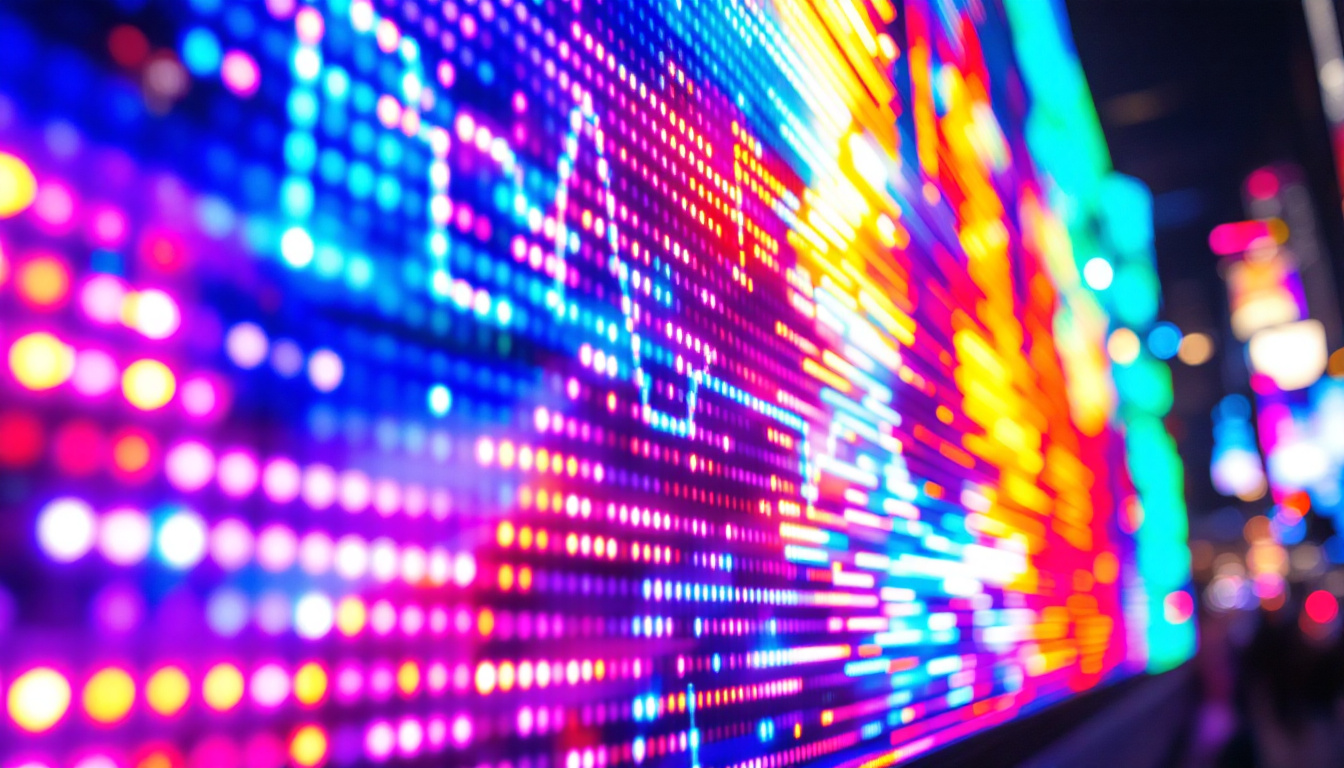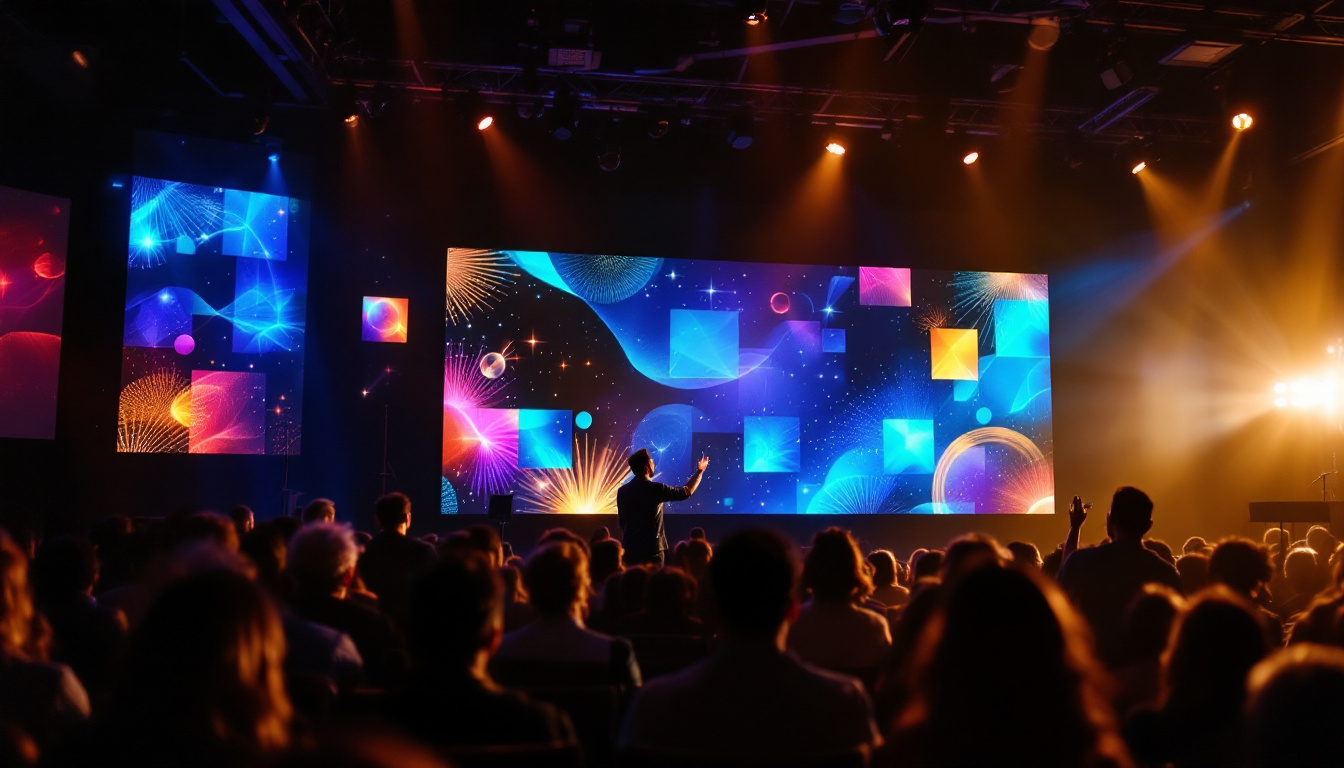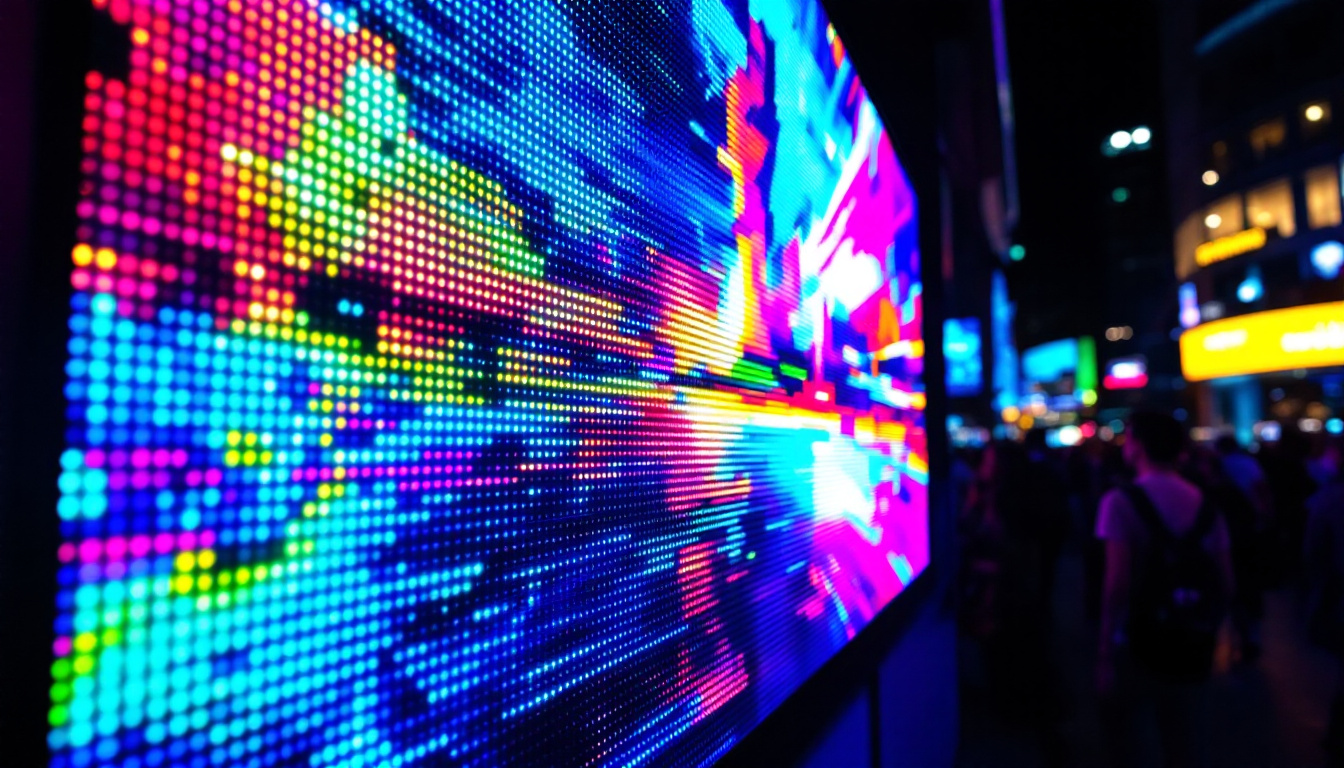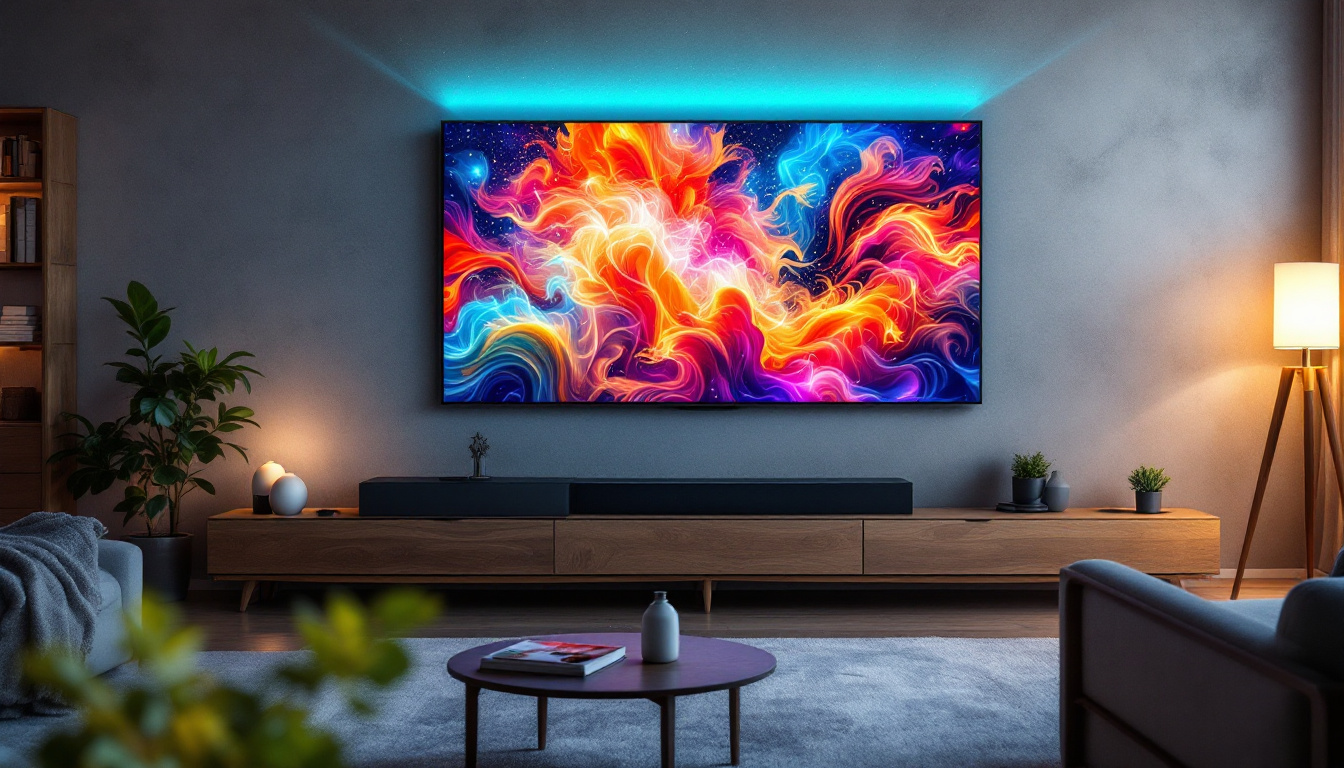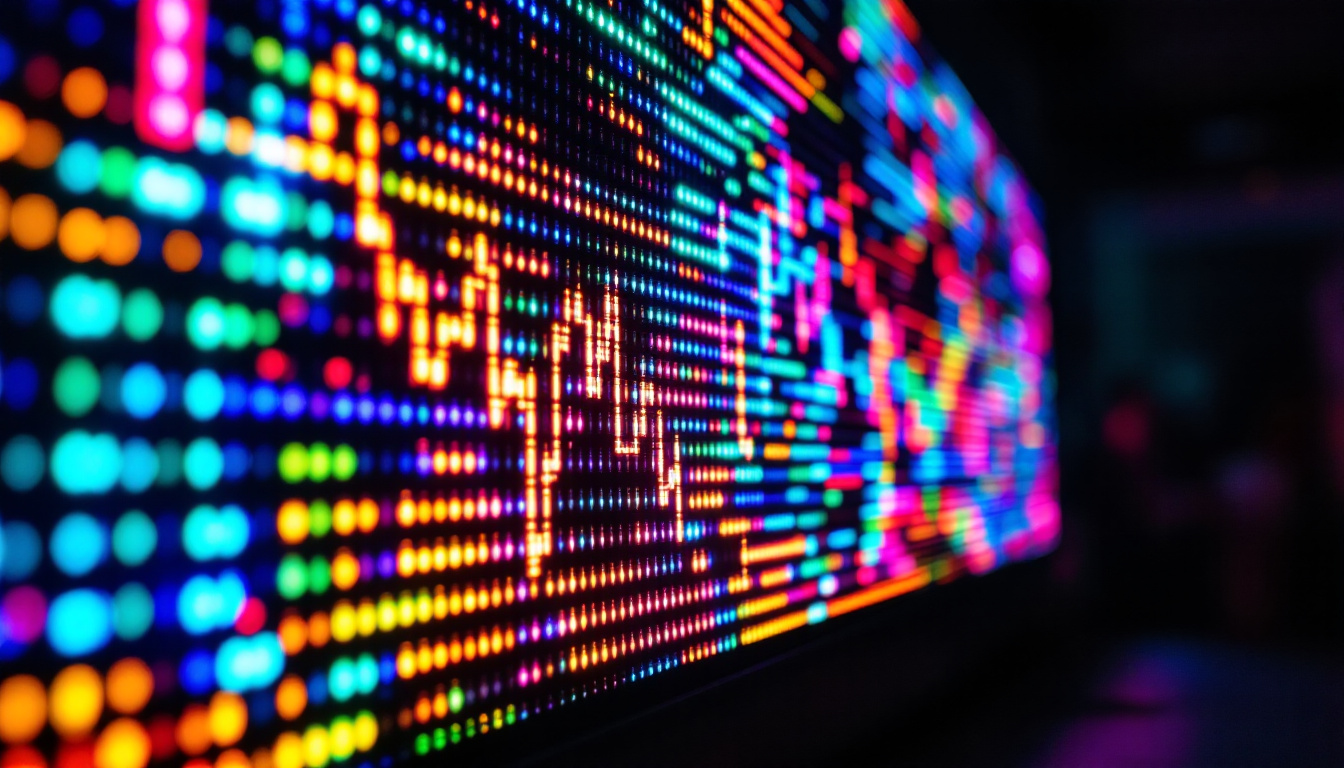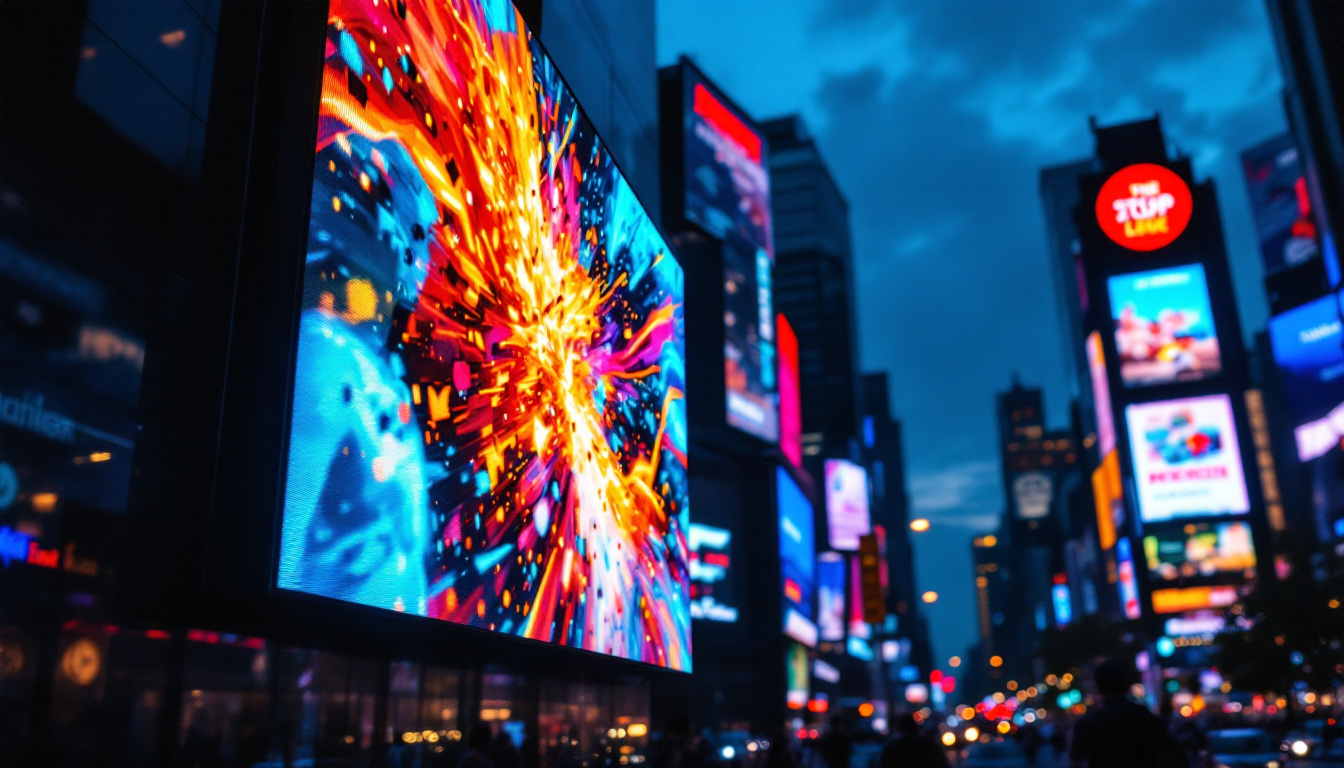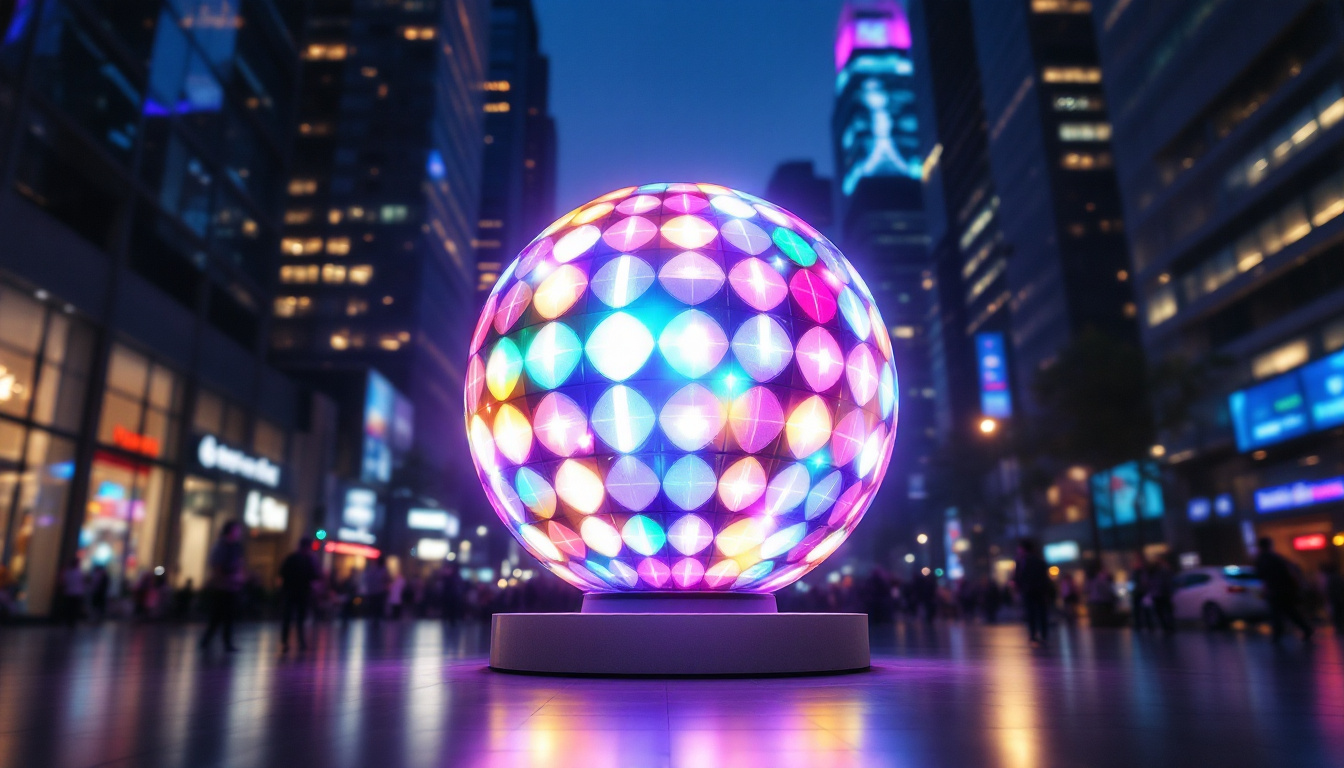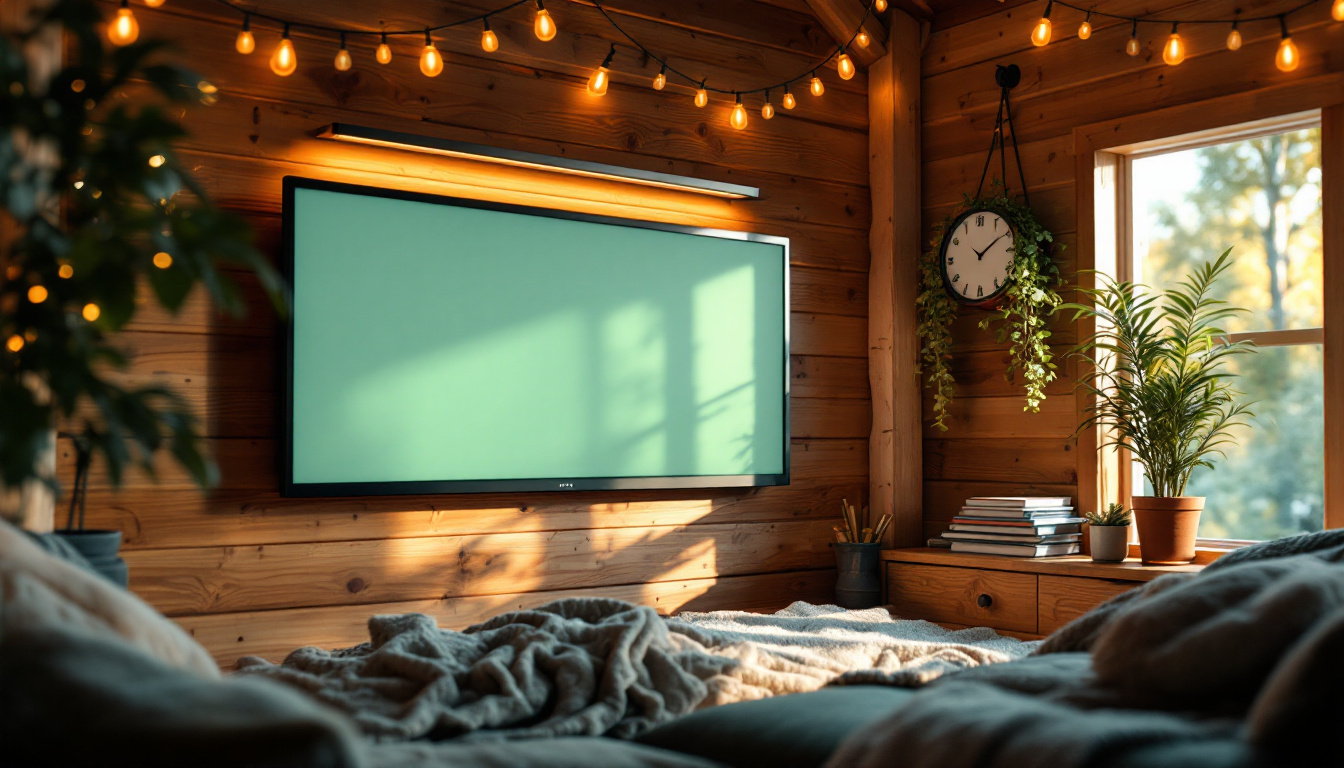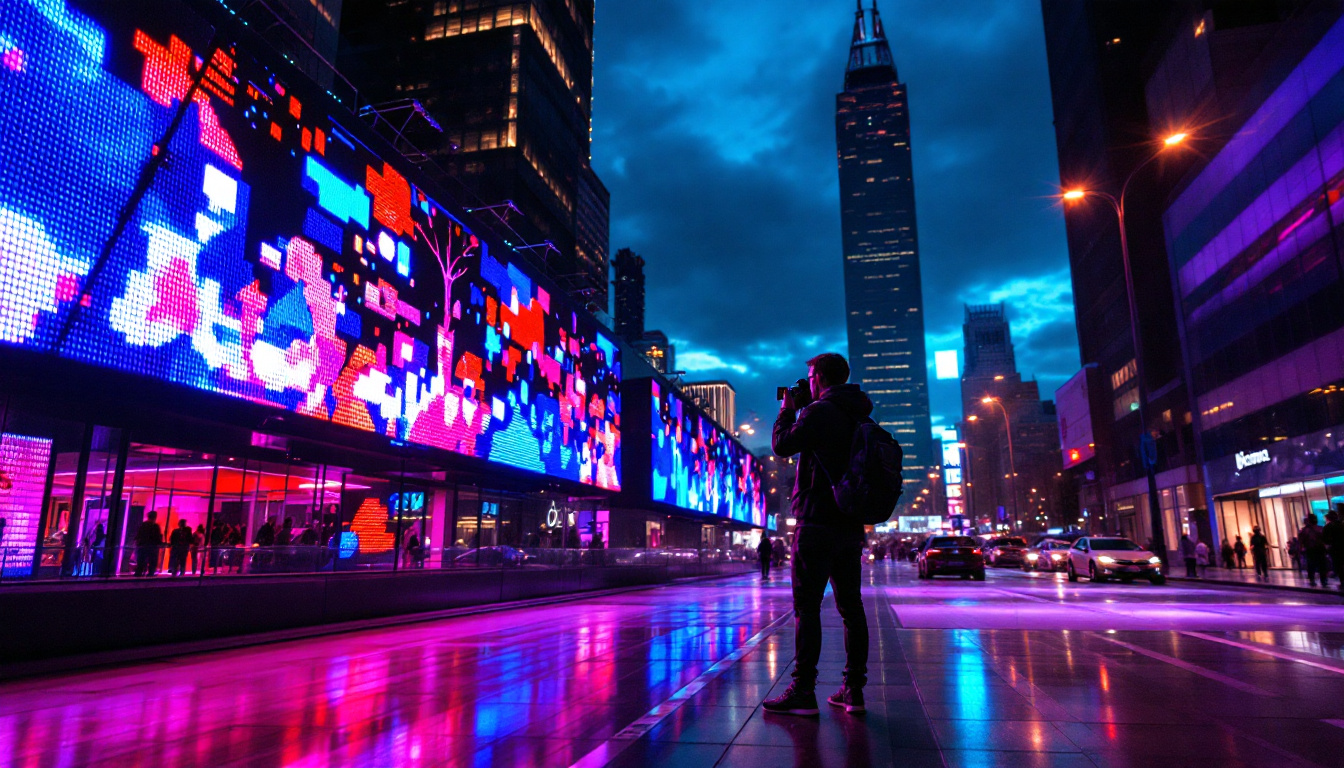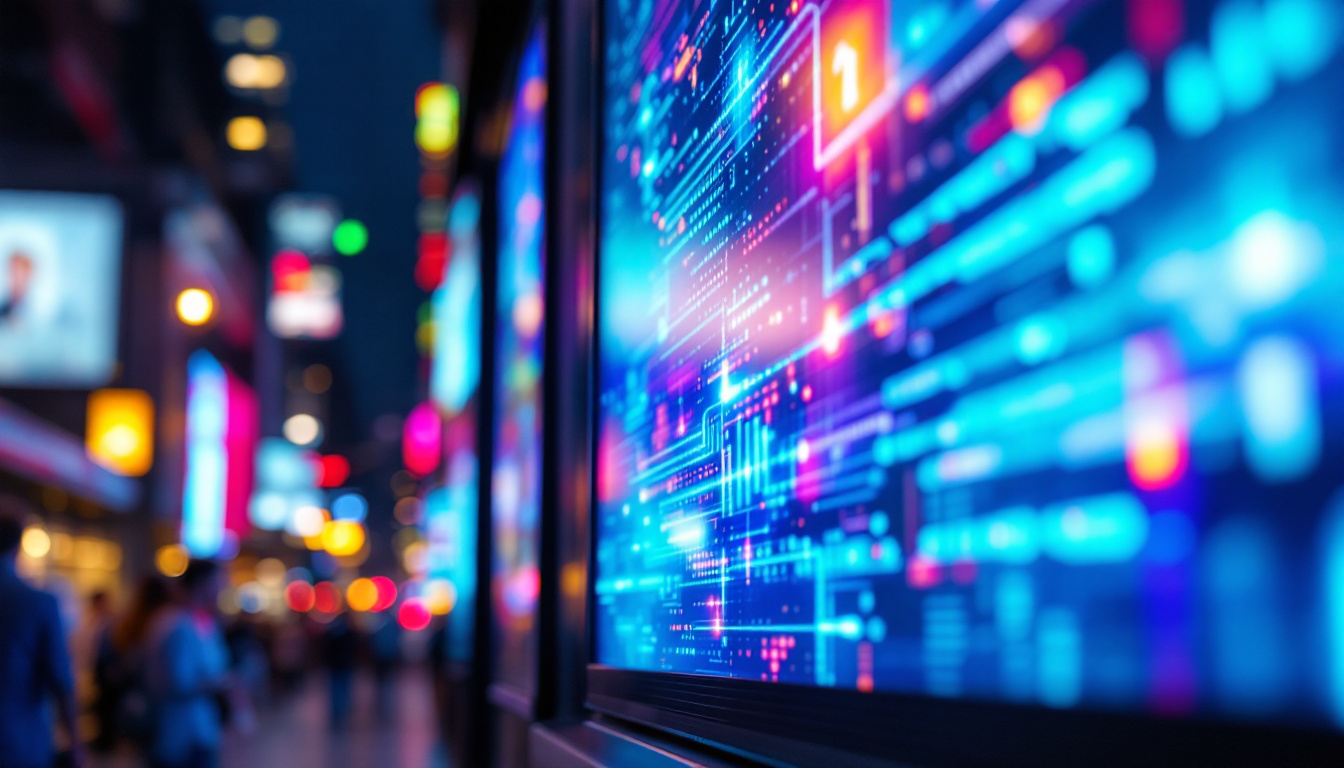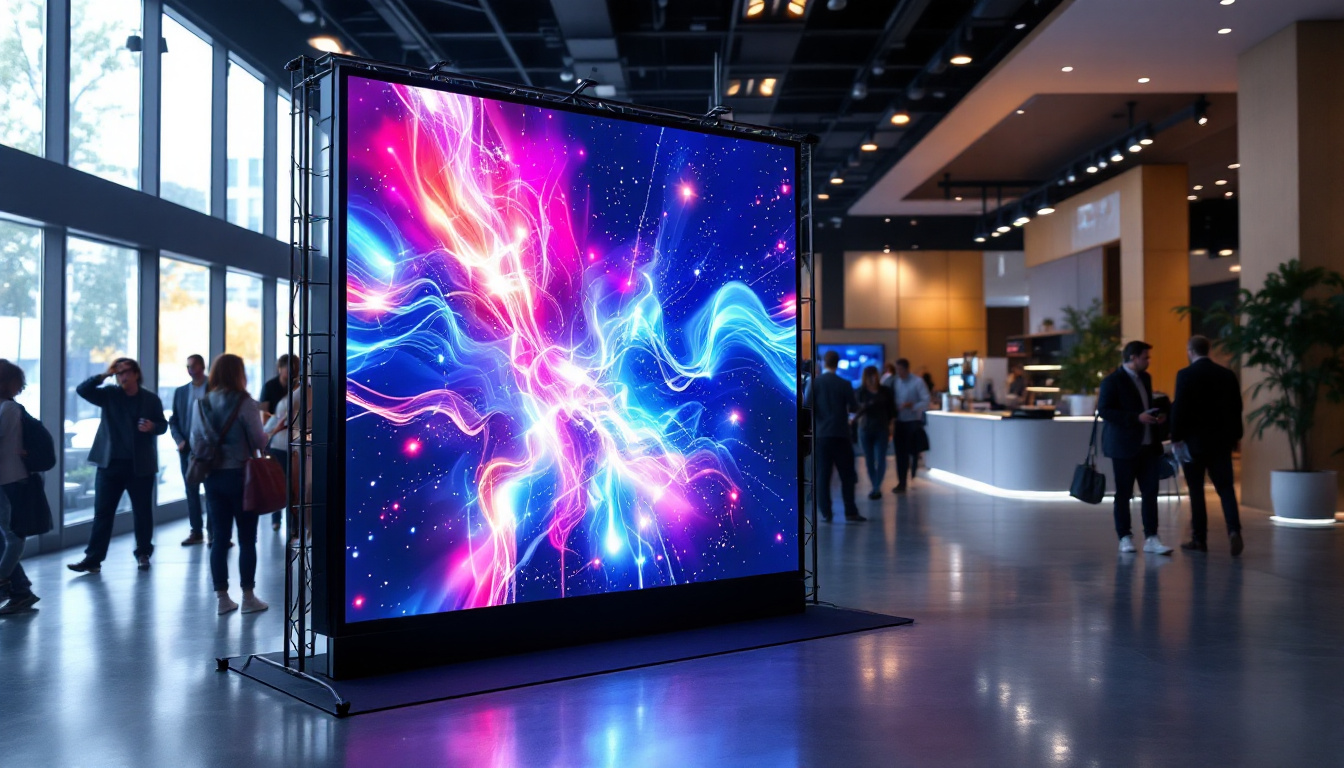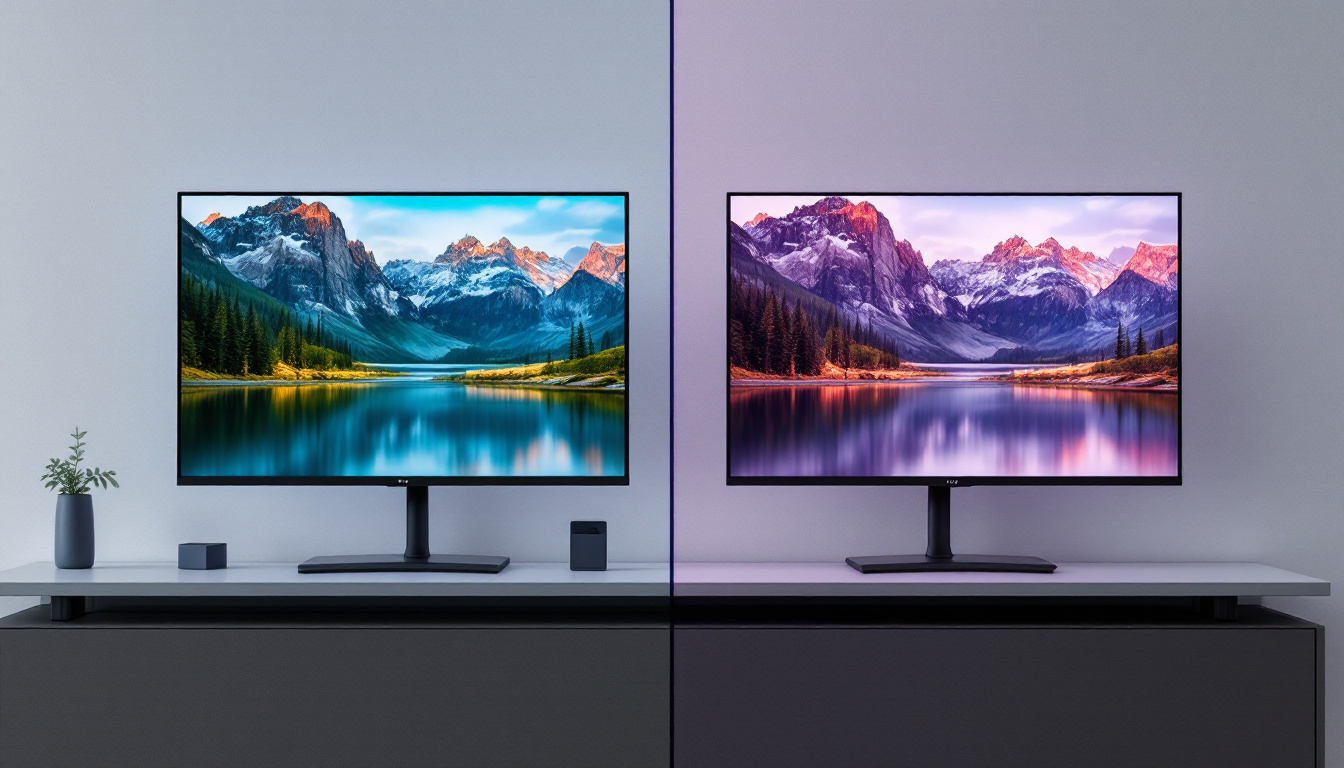In recent years, LED displays have transformed the way we experience visual content, from advertising to entertainment. The surge in popularity of LED walls can be attributed to their versatility, brightness, and energy efficiency. This article delves into the various aspects of LED displays, their applications, and the factors to consider when purchasing one during a sale.
What is an LED Display?
LED, or Light Emitting Diode, displays are made up of numerous tiny diodes that emit light when an electric current passes through them. These displays can be found in various forms, including screens, billboards, and video walls. The technology behind LED displays allows for vibrant colors, high contrast ratios, and the ability to produce images and videos in real-time. The versatility of LED displays has led to their widespread adoption in advertising, entertainment, and information dissemination, making them an integral part of modern visual communication.
In addition to their visual appeal, LED displays are also energy-efficient compared to traditional display technologies. This efficiency not only reduces electricity costs but also contributes to a lower carbon footprint, making them a more sustainable choice for businesses and organizations looking to minimize their environmental impact.
Types of LED Displays
LED displays come in several types, each designed for specific applications. The most common types include:
- Direct View LED: This type is often used for large-scale displays, such as outdoor billboards and stadium screens. Direct view LED displays are known for their brightness and visibility in daylight, making them ideal for capturing the attention of passersby in busy urban environments.
- LED Video Walls: Composed of multiple LED panels, these walls are ideal for events, concerts, and corporate presentations. They can create stunning visuals and are highly customizable, allowing for dynamic content that can be tailored to fit the theme of any event.
- LED Backlit Displays: Commonly found in televisions and computer monitors, these displays use LED technology to enhance the brightness and color accuracy of the screen. This has revolutionized the viewing experience, providing sharper images and deeper blacks compared to older technologies.
How LED Displays Work
The operation of an LED display involves several components, including the LED diodes, a controller, and a power supply. The controller receives input from a video source, processes the information, and sends it to the LED diodes, which light up to create images. The arrangement of these diodes determines the resolution and quality of the display. This modularity allows for flexibility in design and installation, catering to various sizes and shapes to fit different spaces.
One of the key advantages of LED technology is its ability to produce a wide color gamut and high brightness levels. This makes LED displays suitable for various environments, from dimly lit indoor spaces to bright outdoor settings. Furthermore, advancements in LED technology have led to the development of features such as high dynamic range (HDR) and improved refresh rates, enhancing the overall viewing experience. These innovations ensure that LED displays not only meet the demands of modern content but also provide viewers with an immersive visual experience that captivates and engages audiences.
Applications of LED Displays
LED displays are used in a multitude of settings, each benefiting from the unique characteristics of the technology. Here are some of the primary applications:
Advertising and Marketing
One of the most prominent uses of LED displays is in advertising. Businesses utilize LED billboards and screens to catch the attention of potential customers. The dynamic nature of these displays allows for changing content, making them more engaging than traditional static advertisements.
Furthermore, LED displays can be strategically placed in high-traffic areas, maximizing visibility and reach. With the ability to showcase videos, animations, and vibrant graphics, they create a powerful marketing tool that can significantly enhance brand awareness.
Events and Entertainment
In the realm of events and entertainment, LED video walls have become a staple. Concerts, festivals, and corporate events utilize these displays to create immersive experiences. The ability to sync visuals with audio enhances the overall atmosphere, making events more memorable.
Moreover, LED displays can be customized to fit various themes and designs, allowing event organizers to tailor the visuals to their specific needs. This flexibility is a significant advantage in the competitive world of event planning.
Public Information and Transportation
LED displays are also widely used in public transportation systems and information dissemination. Train stations, airports, and bus terminals often feature LED screens that provide real-time information about arrivals, departures, and delays. The clarity and brightness of LED displays ensure that this information is easily readable, even from a distance.
Additionally, cities use LED displays for public service announcements, safety alerts, and community events, making them an essential part of urban infrastructure.
Benefits of LED Displays
The advantages of LED displays extend beyond their visual appeal. Here are some key benefits that make them a preferred choice for various applications:
Energy Efficiency
LED displays are known for their energy efficiency. Compared to traditional display technologies, such as LCD and plasma, LED displays consume significantly less power. This not only reduces operational costs but also minimizes the environmental impact.
With rising energy costs and increasing awareness of sustainability, the energy efficiency of LED displays is a compelling reason for businesses and organizations to invest in this technology.
Longevity and Durability
LED displays have a long lifespan, often exceeding 100,000 hours of use. This durability makes them a cost-effective investment, as they require less frequent replacements compared to other display technologies. Additionally, LED displays are more resistant to damage from shocks and vibrations, making them suitable for both indoor and outdoor installations.
High Brightness and Contrast
One of the standout features of LED displays is their ability to produce high brightness levels and contrast ratios. This ensures that images and videos remain vibrant and clear, even in challenging lighting conditions. Whether in a dimly lit room or under bright sunlight, LED displays maintain their visual integrity, making them versatile for various environments.
Factors to Consider When Purchasing an LED Display
When considering the purchase of an LED display, several factors should be taken into account to ensure that the chosen display meets specific needs and requirements.
Resolution
The resolution of an LED display is crucial for determining the quality of the images and videos it produces. Higher resolution displays, measured in pixels per square meter (PPI), provide sharper and more detailed visuals. For applications requiring close viewing, such as indoor events or retail spaces, a higher resolution is essential.
Conversely, for outdoor advertising where viewers are typically at a distance, a lower resolution may suffice. Understanding the intended use will help in selecting the appropriate resolution.
Size and Configuration
The size of the LED display is another critical factor. Displays come in various sizes, and the choice will depend on the available space and the specific application. For large venues or outdoor settings, larger displays are often necessary to ensure visibility.
Additionally, consider the configuration of the display. Modular LED panels can be combined to create custom shapes and sizes, offering flexibility in design. This adaptability allows for creative installations tailored to unique environments.
Installation and Maintenance
Proper installation and maintenance are vital for the longevity and performance of an LED display. It is essential to choose a reputable supplier who can provide installation services and ongoing support. Some displays may require specialized installation techniques, especially for large or complex configurations.
Furthermore, consider the maintenance requirements of the display. Regular cleaning and servicing will ensure optimal performance and extend the lifespan of the technology. Understanding these needs upfront can save time and costs in the long run.
LED Wall Sale: Timing and Opportunities
With the growing demand for LED displays, sales events often provide excellent opportunities for businesses and individuals to invest in this technology at a reduced cost. Understanding when and how to take advantage of these sales can lead to significant savings.
Seasonal Sales and Promotions
Many manufacturers and retailers offer seasonal sales, especially during holidays and major shopping events. Black Friday, Cyber Monday, and back-to-school sales are prime times to find discounts on LED displays. Keeping an eye on these events can yield substantial savings.
Additionally, manufacturers may run promotions to clear out older inventory as new models are released. This can be an excellent opportunity to purchase high-quality displays at a fraction of the original price.
Bulk Purchase Discounts
For businesses or organizations looking to purchase multiple LED displays, bulk purchase discounts can be a valuable option. Many suppliers offer reduced prices for larger orders, making it more cost-effective to equip an entire venue or fleet of vehicles with LED technology.
Negotiating with suppliers and exploring bulk options can lead to significant savings, making it worthwhile for organizations with extensive display needs.
Financing Options
For those who may not have the immediate budget for a large investment, many suppliers offer financing options. This allows businesses to acquire the necessary LED displays while spreading the cost over time. Understanding the terms and interest rates associated with financing can help in making an informed decision.
Additionally, some suppliers may offer leasing options, allowing organizations to use the technology without the upfront costs of purchasing outright. This flexibility can be particularly beneficial for events or temporary installations.
Conclusion
LED displays represent a significant advancement in visual technology, offering unparalleled brightness, energy efficiency, and versatility. Their applications span various industries, from advertising to entertainment, making them an essential tool for modern communication.
As the demand for LED displays continues to grow, understanding the various types, benefits, and factors to consider when purchasing is crucial. By taking advantage of sales opportunities and exploring financing options, businesses and individuals can invest in this technology while maximizing their budget.
Whether for a large-scale advertising campaign, an immersive event experience, or public information dissemination, LED displays are poised to play a pivotal role in shaping the future of visual communication.
Discover LumenMatrix LED Display Solutions
Ready to elevate your visual communication with cutting-edge LED technology? Look no further than LumenMatrix, where innovation meets excellence. From vibrant Indoor and Outdoor LED Wall Displays to dynamic Vehicle and Sports LED Displays, our extensive range of solutions is designed to captivate your audience and amplify your message. Experience the future of digital signage with our LED Poster Displays, Floor LED Displays, Custom configurations, All-in-One solutions, and Transparent Displays. Embrace the power of LumenMatrix and transform your space into a hub of engagement. Check out LumenMatrix LED Display Solutions today and see your vision come to life.

